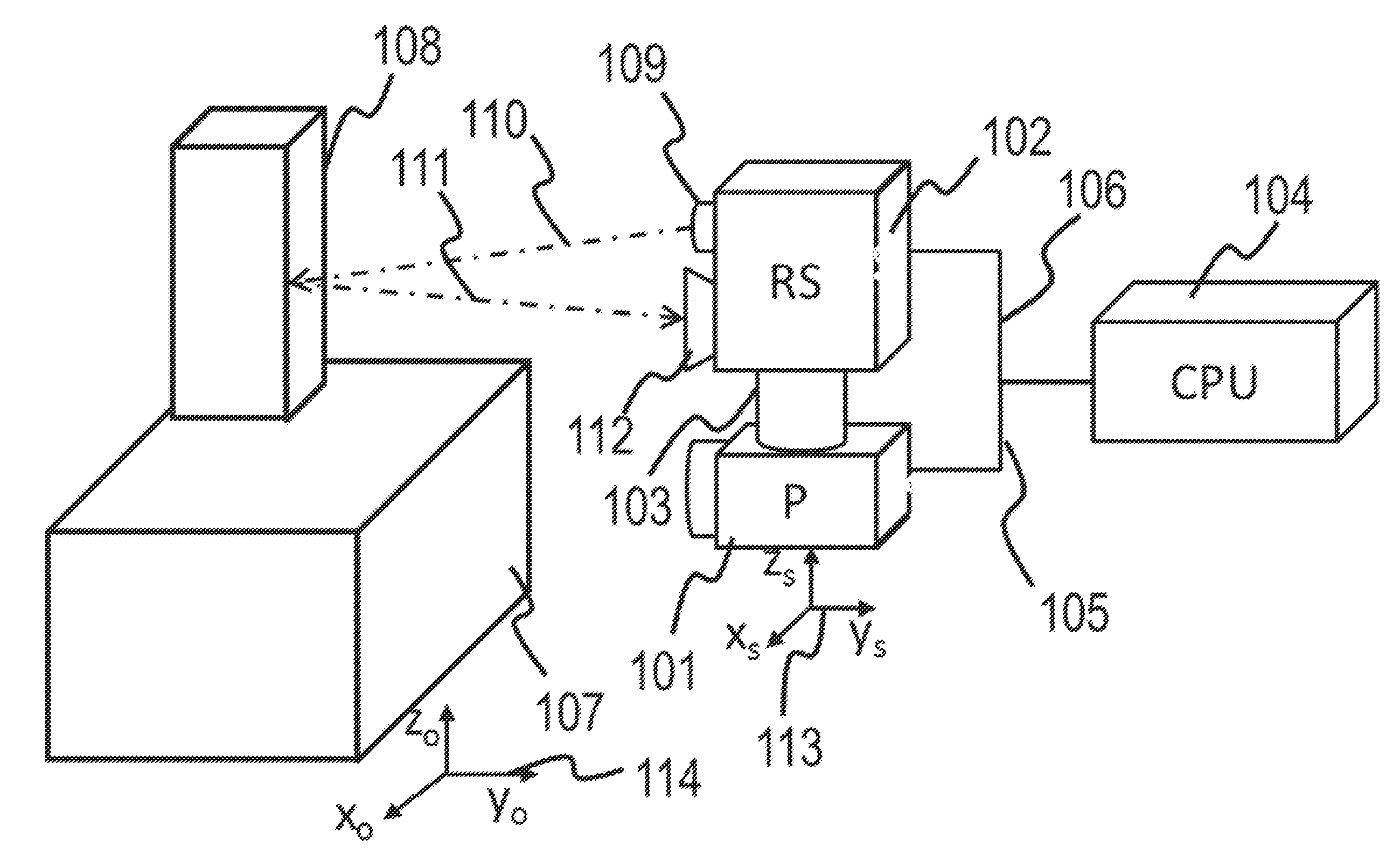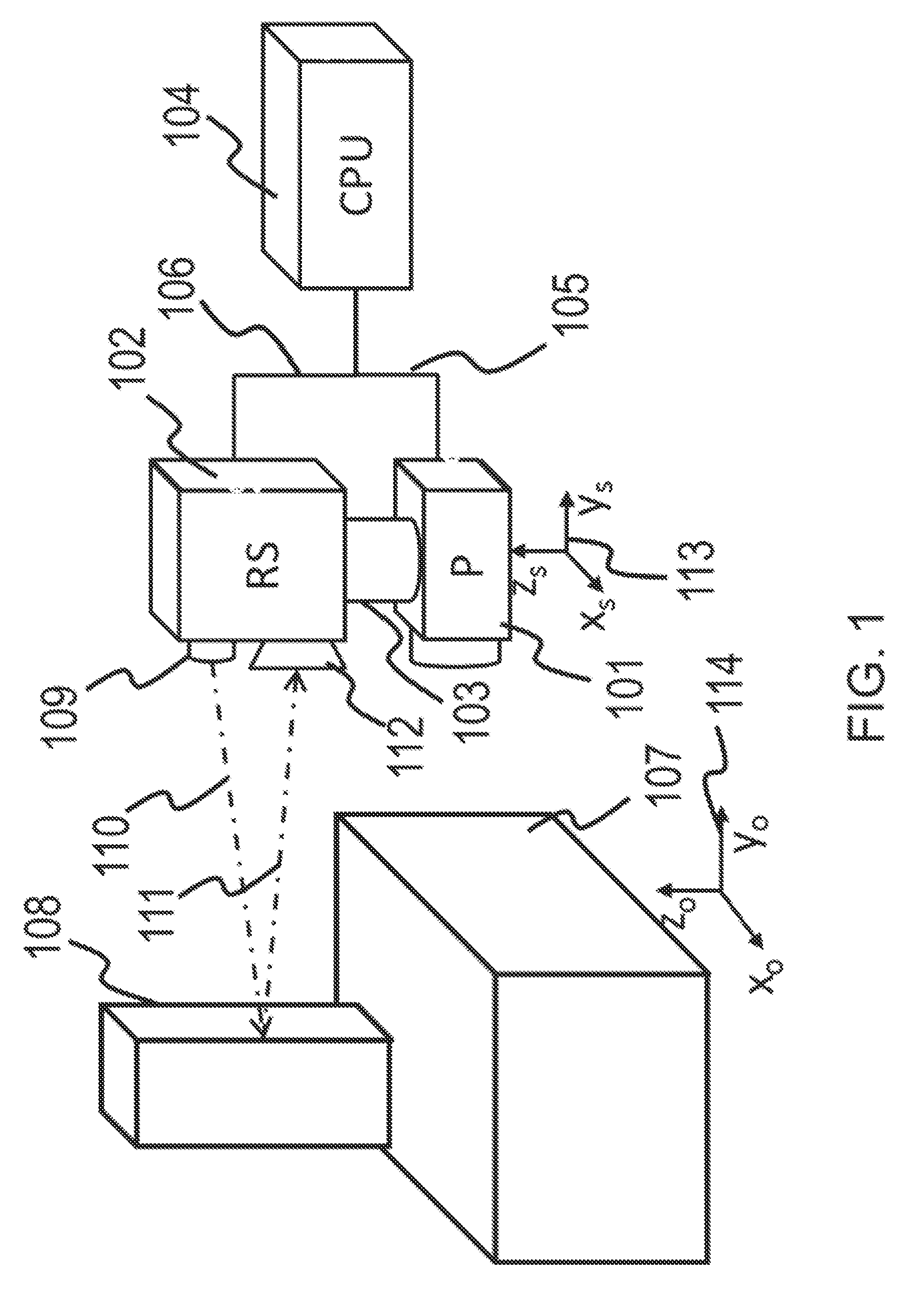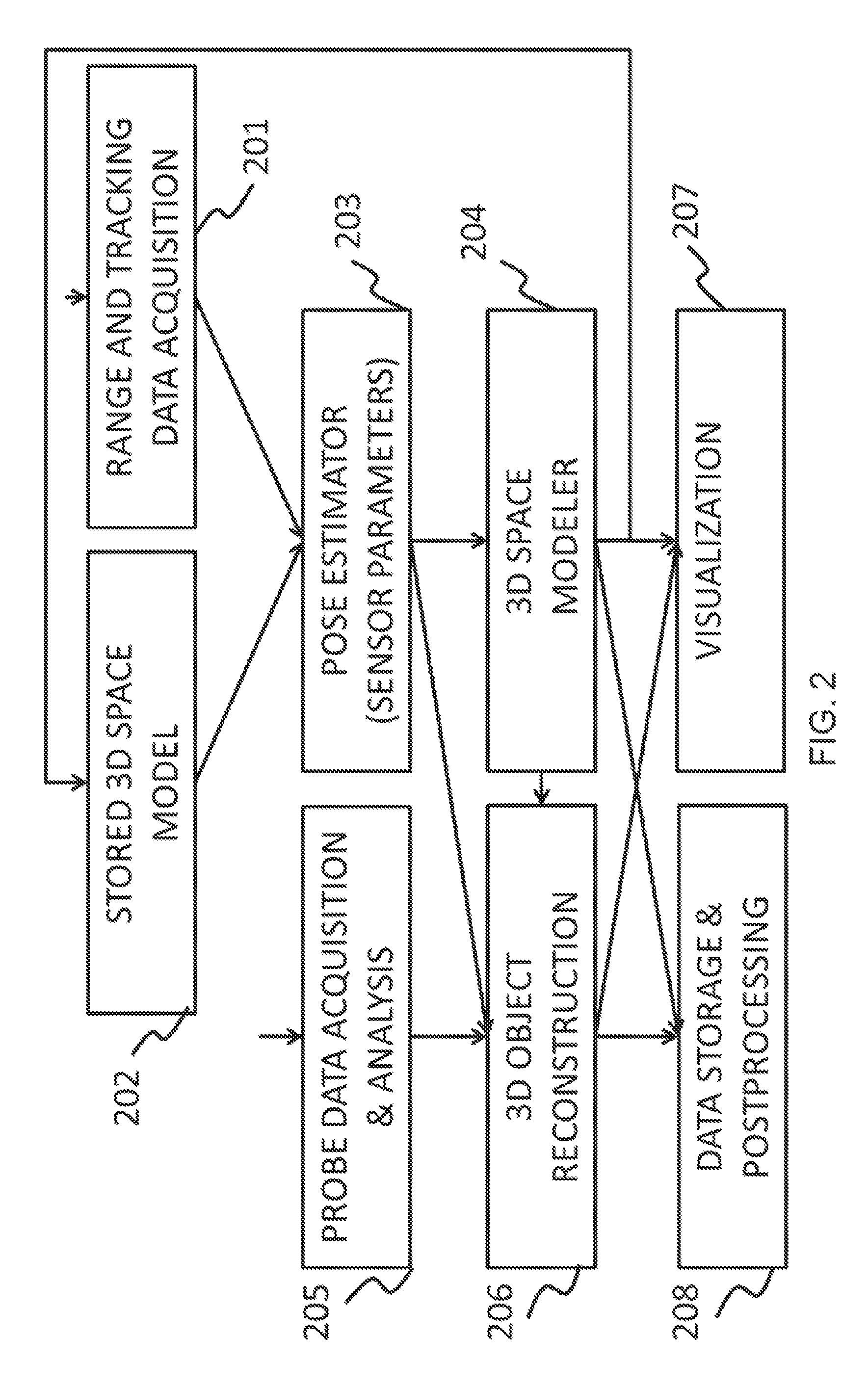Methods and systems for tracking and guiding sensors and instruments
a technology for tracking and guiding sensors and instruments, applied in the field of position and orientation determination devices, can solve the problems of inability to track, limited spatial resolution, expensive, inconvenient, etc., and achieve the effect of reducing ultrasound artifacts and speckles, and improving the quality of tissue types and elastomeric properties
- Summary
- Abstract
- Description
- Claims
- Application Information
AI Technical Summary
Benefits of technology
Problems solved by technology
Method used
Image
Examples
Embodiment Construction
[0062]Herein are described methods and systems using these methods aimed at providing position and orientation (or spatial registration) for various instruments, such as hand-held probes, sensors, scanners, imagers or other instruments, with respect to investigated objects and environmental objects. An instrument can generically be referred to as a “probe.”
[0063]The purpose of spatial registration can be multiple-fold. One benefit is the introduction of the capability to provide three dimensional (3D) models of the investigated objects. These 3D models can include multiple layers of information, such as physical characteristics, as well as other characteristics provided by probe. Another benefit is the determination of the position and orientation of the probe in relationship to the investigated environment. As a result of this, a three dimensional distribution of the quantity measured by the probe can be determined. One dimensional (1D) or two dimensional (2D) distributions can als...
PUM
 Login to View More
Login to View More Abstract
Description
Claims
Application Information
 Login to View More
Login to View More - R&D
- Intellectual Property
- Life Sciences
- Materials
- Tech Scout
- Unparalleled Data Quality
- Higher Quality Content
- 60% Fewer Hallucinations
Browse by: Latest US Patents, China's latest patents, Technical Efficacy Thesaurus, Application Domain, Technology Topic, Popular Technical Reports.
© 2025 PatSnap. All rights reserved.Legal|Privacy policy|Modern Slavery Act Transparency Statement|Sitemap|About US| Contact US: help@patsnap.com



